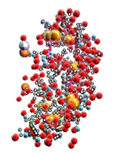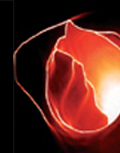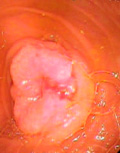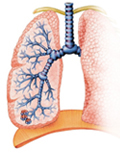The eLitMed.hu medical portal uses computer cookies for convenient operation. Detailed information can be found in the Cookie-policy.
Lege Artis Medicinae - 2009;19(11)
Content
[Diabetes mellitus and cancer risk]
[In the past decades, the prevention of micro- and macrovascular complications has been the main target of diabetes treatment. On the basis of the latest publications that have created a storm we have to highlight the associations between diabetes mellitus, its treatment protocols and tumours. Analysing the often controversial human results, in the absence of relevant prospective studies, we have to consider preclinical observations to choose a safe treatment method.]
[Cirrhosis and its complications: diagnostic and treatment options]
[During the past two decades, the management of complications of cirrhosis has dramatically changed, which substantially improved the patients’ survival. The present paper provides an overview of the diagnosis, treatment and prevention of cirrhosis and its complications including portal hypertension, variceal bleeding, ascites, hepatorenal and hepatopulmonary syndromes, encephalopathy and bacterial infection. Besides noninvasive diagnostic methods, pharmacological and endoscopic treatment modalities are discussed, with emphasis of the importance of nonselective beta-blockers, vasoactive therapy, antibiotic and albumin medication. Prevention and early diagnosis of cirrhosis as well as new pharmacological agents under development presumbaly result in further development in the management of patients with advanced, chronic liver disease.]
[Treatment of severe infections: principles of therapy and problems of resistance]
[The basic principles of the treatment of severe infections have recently been delineated : after having samples for microbiological tests, empiric therapy based on local resistance patterns should be introduced immediately, possibly within 1 hour in severe sepsis or in septic shock, the empiric therapy should be simplified according to the results of microbiological tests and/or improvement of the condition of patient , the antibiotics should be applied according to their pharmacodynamic properties, the duration of therapy should be shortened to the minimum time, in case of well responding non-complicated infection to 5-7 days., The most frequent problem pathogens in Hungary are the MRSA and ESBL-producing Gram-negatives. In severe infections with MRSA bacteremia, the therapy sholud be based on the vancomycin MIC of the pathogen. If MIC is below 1,5 mg/l, vancomycin is probably effective with a serum minimum concentration of 15 mg/l, while in case of less sensitive pathogens the administration of an alternative agent, such as linezolid, tigecyclin or daptomycin should be considered. In severe infections due to ESBL-producing pathogens, the carbapenems are the firts line antibiotics, while tigecyclin seems to be a promising alternative agent. The treatment of severe infections requires thorough care of the patient and skillnes in antimicrobial therapy in the period of multiresistant pathogens]
[The significance of statin pleiotropy]
[Application of statins in the primary and secondary prevention of atherosclerosis is of great importance. Attenuation of cardiovascular risk by statin therapy is primarily related to a decrease in serum cholesterol levels. Scientific data published in the past few years highlight the importance of the beneficial effects of statins that are not related to cholesterol-lowering. These effects are known as pleiotropic effects. This review aims to present the current view of statins’ pleiotropic effects.]
[The role of double-balloon endoscopy in the diagnosis and treatment of small intestinal disease compared with capsule endoscopy]
[INTRODUCTION - Until recently, only the proximal small bowel was accessible for diagnostic or therapeutic endoscopy. A new method, doubleballoon enteroscopy (DBE), provides high-resolution imaging and enables both diagnostic and therapeutic interventions in all segments of the gastrointestinal tract. Our aim was to report our experiences with the Fujinon EN-450 T5 therapeutic double-balloon endoscope and compare our findings with the results of earlier capsule endoscopy where this was available. METHODS - Between August 2005 and July 2009, 150 DBE procedures were conducted in 139 consecutive patients (M/F: 67/72, age: 51.1±18.6 years) who presented at our tertiary referral hospital. The examination was performed via the oral route in 112 patients, via the anal route in 16 patients, and via both routes in 11 patients. DBE was indicated due to obscure gastrointestinal bleeding in most cases (83), due to diagnosis or complication of IBD in 29 cases and due to polyposis syndrome or suspected neoplasia in 25 patients. In one patient we performed endoscopic retrograde cholangiopancreatography (ERCP). All procedures were performed using i.v. anaesthesia at our outpatient clinic. After the procedure, the patients were monitored in a recovery room for at least four hours. The results of previous capsule endoscopy were available in 27 patients. RESULTS - Small-bowel abnormalities ? mostly angiodysplasias, minor erosions or ulcers ? were detected in 50 (60.2%) of the patients with obscure gastrointestinal bleeding. Malignancy was found in 7,2% (6/83) of the patients who were examined because of bleeding (three gastrointestinal stoma tumour, one non-Hodgkin lymphoma, one previously undetected melanoma metastasis and one pancreatic adenomacarcinoma that involved the duodenum) Intervention was performed in 24 patients. IBD was diagnosed in five (38.5%) of the 13 patients in whom the disease was suspected. In patients with known Crohn-disease, DBE was indicated on the basis of the extent, behaviour and activity of the disease. Polypectomy was performed in eight patients with Peutz-Jeghers syndrome or familial adenomatous polyposis syndrome, whereas small-bowel adenocarcinoma was diagnosed in four patients. The concordance between the findings of capsule endoscopy and DBE was 51.8% (14/27), and in one patient DBE revealed malignancy that has not been detected by endoscopy. The average insertion length during the procedure was approximately 213 cm (range 50-480 cm, SD 111). CONCLUSIONS - On the basis of our results, DBE is a safe and useful method for assessing and treating small bowel disease, even if capsule endoscopy is contraindicated due to suspected strictures.]
1.
Clinical Neuroscience
[Headache registry in Szeged: Experiences regarding to migraine patients]2.
Clinical Neuroscience
[The new target population of stroke awareness campaign: Kindergarten students ]3.
Clinical Neuroscience
Is there any difference in mortality rates of atrial fibrillation detected before or after ischemic stroke?4.
Clinical Neuroscience
Factors influencing the level of stigma in Parkinson’s disease in western Turkey5.
Clinical Neuroscience
[The effects of demographic and clinical factors on the severity of poststroke aphasia]1.
2.
Clinical Oncology
[Pancreatic cancer: ESMO Clinical Practice Guideline for diagnosis, treatment and follow-up]3.
Clinical Oncology
[Pharmacovigilance landscape – Lessons from the past and opportunities for future]4.
5.




















